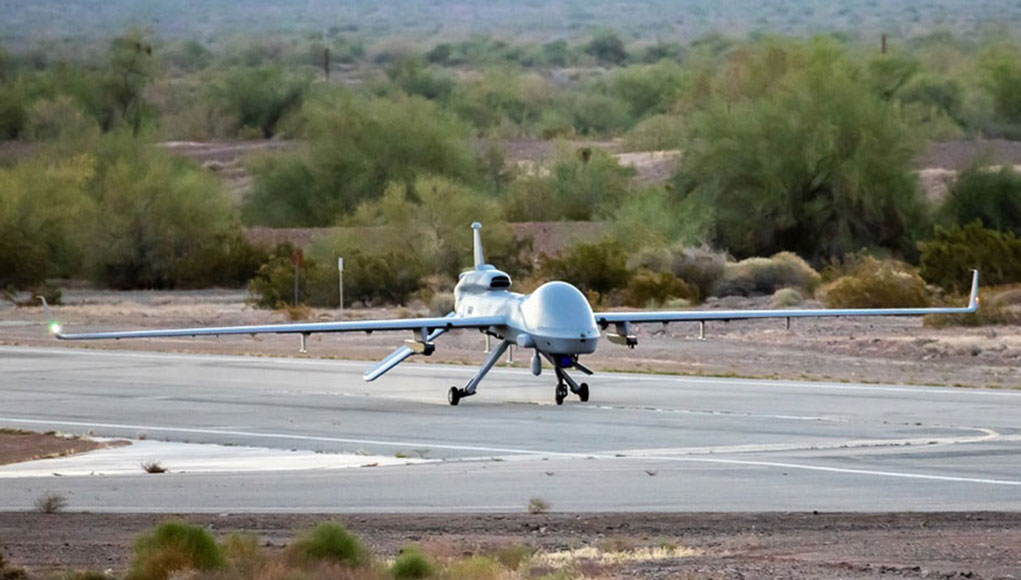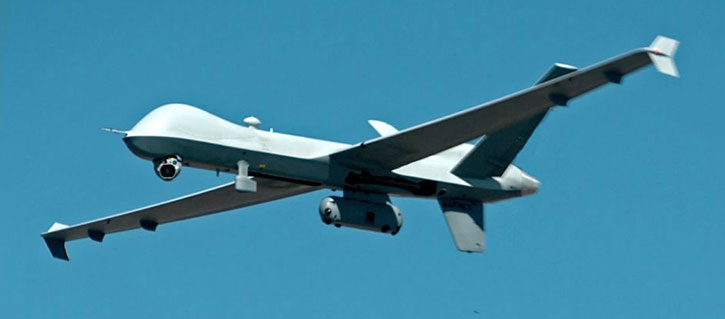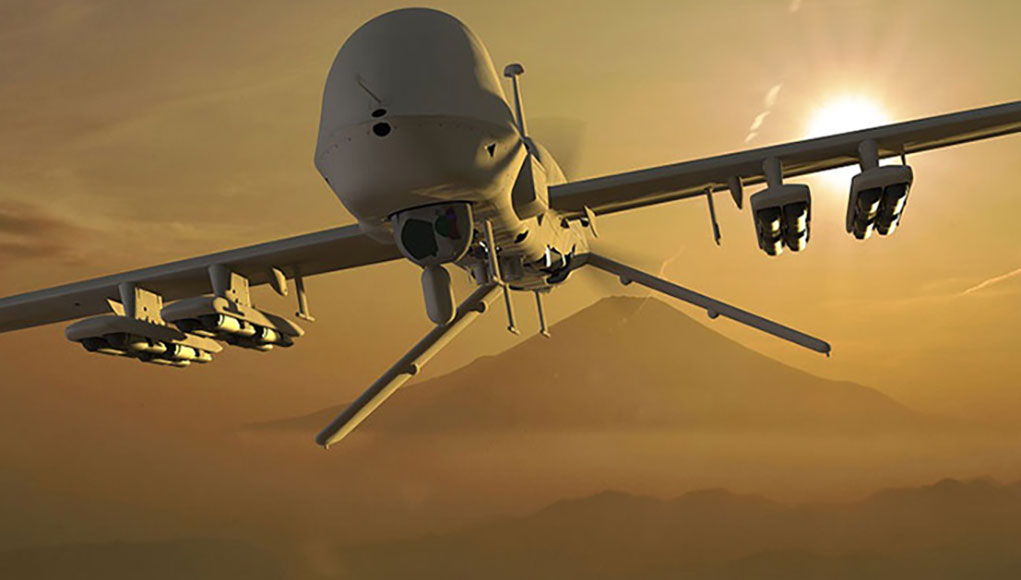General Atomics-Aeronautical Systems, Inc. (GA-ASI) began the first installation of factory upgrades to a Gray Eagle-Extended Range (GE-ER) Unmanned Aircraft System to enhance its capabilities to support Multi-Domain Operations (MDO). The MDO upgrade follows a series of demonstrations that showcased GE-ER’s persistent stand-off survivability with stand-in capabilities and up to 40 hours of endurance. Under the current program, the U.S. Army-funded program includes two aircraft. Flight tests and qualifications will start later this year.
Modernization efforts focus on increased capability and survivability in a large-scale combat operations environment. The modernization efforts ensure that the Army’s MQ-1C GE-ER (MDO) can operate and thrive in a degraded navigation environment and provide high fidelity situational awareness through a suite of long-range sensors.
According to Don Cattell, vice president for Army Programs at GA-ASI, the upgrades ensure Gray Eagle’s support of advanced teaming operations with manned and other unmanned platforms. “We are fully committed to our Army partners to make sure our proven GE-ER is equipped for its role as the designated platform for long-range sensors and Air-Launched Effects (ALEs),” Cattell said. Deploying ALE over the area under surveillance, the Gray Eagle ER (MDO) will serve as the “ALE Mothership” and enable joint forces to maintain situational awareness deep into the battlefield.

GA-ASI worked with the Army to demonstrate MDO capabilities on the Gray Eagle ER at Yuma Proving Grounds, which included fully integrated, internally mounted long-range sensors, ALEs, and laptop-based and handheld control interfaces. The Modernized GE-ER (MDO) incorporates open architecture aircraft and ground systems, advanced datalinks, and an upgraded propulsion system, significantly enhancing the ability to add new capabilities, provide resilience to electronic threats, and expeditionary employment to austere locations.
The upgraded variant utilizes the open architecture design to operate through a scalable command and control (SC2) interface. The SC2 system enables soldiers to operate the GE-ER (MDO) through a laptop or handheld devices. Advancements in artificial intelligence and machine learning help streamline the system’s operation and reduce operator workload.

Demonstrations focused on enabling a Joint Terminal Attack Controller (JTAC) to control the Electro-optical/Infrared (EO/IR) sensor on a Gray Eagle Extended Range UAS, and rapidly call for direct and indirect fire on an array of targets. The JTAC was able to see GE-ER video, aircraft location, and sensor field of regard utilizing an Android Team Awareness Kit (ATAK) and a TrellisWare TW-950 TSM Shadow Radio. Utilizing the GE-ER’s open architecture, the JTAC was able to send a digital ‘Call for Fires’ to request artillery support and a digital 9-line for Close Air Support with the push of a few buttons. The GE-ER, configured for Multi-Domain Operations, autonomously re-routed its flight path to provide the sensor data that the JTAC requested without commands from the GE-ER operator.

Under another demonstration, GA-ASI demonstrated the use of self-protection pod (SPP) capabilities of the MQ-9 UAS, as part of a Cooperative Research and Development Agreement (CRADA) with U.S. Special Operations Command (USSOCOM), and with the support of the Air National Guard (ANG), the U.S. Navy (USN), and industry partners. SPP leverages mature Aircraft Survivability Equipment (ASE) to provide full-spectrum awareness and countermeasures. The pod uses Raytheon’s AN/ALR-69A(V) Radar Warning Receiver (RWR) set and Leonardo DRS AN/AAQ-45 Distributed Aperture Infrared Countermeasure (DAIRCM) System that utilizes a single sensor for both 2-color IR missile warning and wide field-of-view gimbal for threat countermeasures. Both sensors support threat warnings. In addition, the pod features BAE Systems’ ALE-47 countermeasures dispenser System to release airborne flares, chaff, and the BriteCloud Expendable Active Decoy (EAD), which is a small, expendable self-contained Digital Radio Frequency Memory (DRFM)-based expendable decoy. The ECM suite is managed by the Terma AN/ALQ-213 Electronic Warfare Management System, which provides the interface, health, status, and command and control for the various systems installed in the pod. that functions as the ASE manager that coordinates between the various threat warning and dispensing systems to automatically dispense the appropriate sequencing pattern and expendables to protect the drone.




















